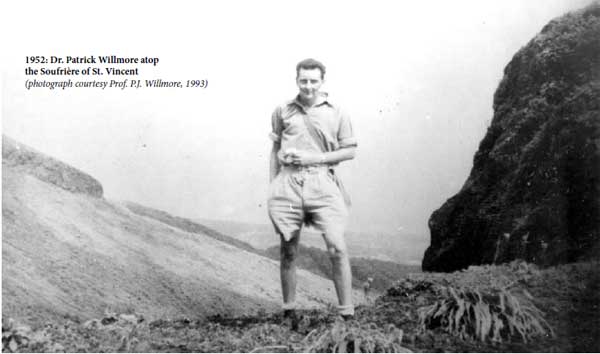 |
 |
 |
|
February 2013
|

A trillion dollars worth of buildings and infrastructure, accumulated since 1981 is what we stand to lose should there be any untoward geological activity in Trinidad and Tobago. Speaking at the launch of this year’s activities to mark the 60th anniversary of The UWI Seismic Research Centre on January 29, Dr Joan Latchman said that, “societal development can be set back a generation if measures are not put in place to ensure that our regional development plans factor in geological vulnerabilities.” Dr Latchman, a seismologist and acting Director of the SRC, said, “In the early 1980s the Unit became involved in the effort to develop a regional building code and expanded research that would provide the parameters needed for implementing such a code in practice.” Dr Latchman was delivering the feature address at the launch, which also saw the unveiling of a new logo and a schedule of activities planned for the celebratory year. She traced the history of the region’s seismic research and outlined some of the plans for the future. You can read the full text of her address here. In welcoming guests, PVC and Campus Principal Professor Clement Sankat invoked the names of some of the pioneers of seismic research: Dr Patrick Willmore, Dr Geoffrey Robson, Dr Ken Barr, Mr Desmond Woo, Dr John Tomblin and Professor John Sheppard, as he recognized “the dedication and sterling contribution not only of the past directors and staff, but also the current team,” on behalf of The UWI and the people of the region. “Yours is an excellent example of service to nation and region. I know that this has taken great effort and commitment from each and every one of you, but I say that your long-standing commitment, dedication and patience are being rewarded with a new facility that is currently under construction.” As he gave his word that the new facility would be completed within the year, he urged that it become “a global centre of excellence, where young scholars from across the world and especially from South America and the Caribbean can come for graduate and post-doctorate training and teaching in volcanology and seismology.”
Adding that research must have impact, he noted that the SRC has been advancing knowledge globally in the field and it has shaped policy and action that underlie and drive regional development. He said that while research centres at The UWI are few, “we need to support the SRC” because it comes close to being a best model in best practice in terms of research at The UWI. It is truly regional in its scope, he said, and has maintained international recognition for the quality of its research. He also noted that the SRC was practically self-sustaining, employing a significant number of its staff through project funding. Dr Latchman had earlier explained its funding: “It should be noted that keeping pace with state-of-the-art technology over the years, initiatives to improve public awareness and scientific thrusts do not and cannot come from our regular budget. The SRC is directly financed by the Governments of the English-speaking Eastern Caribbean and these contributions cover recurrent expenditure. All upgrades have come through staff initiatives, whether it is building equipment, rehabilitating old equipment or from collaborative projects and funding agencies.” “The SRC of today has benefitted from the input of scientists from around the world and many of these former staff members, who helped to lay the foundation for the very important pursuit of earthquake and volcano monitoring and understanding of the processes at work in the English-speaking Eastern Caribbean have excelled internationally, but have continued to promote the work of the SRC whenever possible. At every stage, many who have joined the staff have quickly embraced our vision, and those who have put in long service have been the unbroken thread connecting back to the founders over the 60 years of our operations,” she said. Recent outputs that directly address the foundations of hazard preparedness are the Volcanic Hazards Atlas of the Lesser Antilles, updated Seismic Hazard Maps for the Eastern Caribbean Islands and Tsunami Smart promotion. -Vaneisa Baksh |

 PVC for Research, Professor Wayne Hunte, also spoke, outlining the Centre’s importance. Its research has led to international recognition; has provided information to guide development and to improve the teaching curriculum, and it “separates us from competitors,” he said.
PVC for Research, Professor Wayne Hunte, also spoke, outlining the Centre’s importance. Its research has led to international recognition; has provided information to guide development and to improve the teaching curriculum, and it “separates us from competitors,” he said.